Central Banks Monitor
Monitor the latest developments of central banks of the largest economies in the world using MacroVar's data analytics, real-time economic calendar and central banks news monitor.
-->
| Country | Code | Latest % | YoY | Cycle # | Rate Trend (5 years) | Balance Sheet | B/S YoY% | B/S Trend (5 years) |
|---|---|---|---|---|---|---|---|---|
| United States | US | 5,50 | 5,25 | 52 | 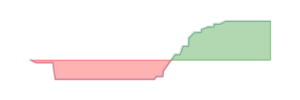 |
7.224.080 | -12,36 | 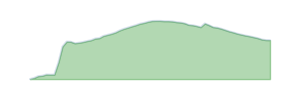 |
| Canada | CA | 4,75 | 4,50 | -1 | 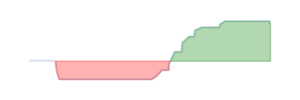 |
273.021 | -23,63 | 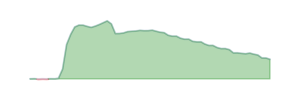 |
| Brazil | BR | 10,50 | 13,75 | 1 | 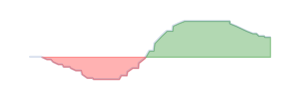 |
4.098.640.000 | 0,88 | 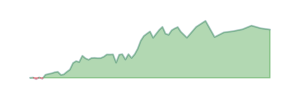 |
| Mexico | MX | 11,00 | 11,25 | 2 | 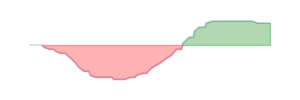 |
4.576.080.000 | 1,34 | 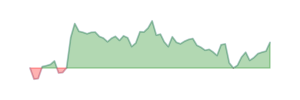 |
| Euro Area | EA | 4,25 | 4,00 | 1 |  |
6.497.700 | -9,62 | 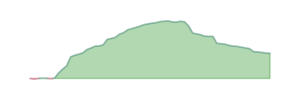 |
| Denmark | DK | 3,35 | 2,85 | -1 | 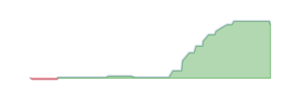 |
680 | 4,96 |  |
| Sweden | SE | 3,75 | 3,50 | 1 |  |
1.225.400 | -13,65 | 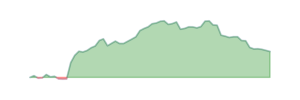 |
| Norway | NO | 4,50 | 3,25 | 48 | 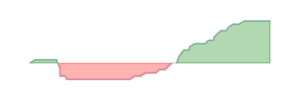 |
18.675.900 | 14,66 | 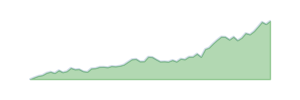 |
| Switzerland | CH | 1,25 | 1,50 | -1 |  |
843.750 | -9,34 |  |
| UK | GB | 5,25 | 4,50 | 53 | 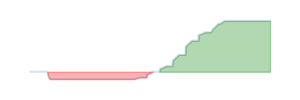 |
917.270 | -2,56 | 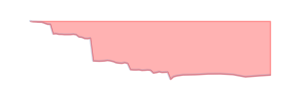 |
| Russia | RU | 16,00 | 7,50 | 19 | 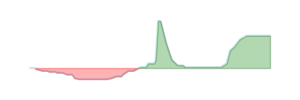 |
62.189.600 | 18,32 | 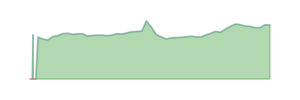 |
| Turkey | TR | 50,00 | 15,00 | 16 | 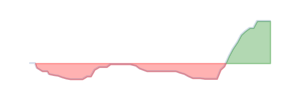 |
7.663.250.000 | 91,38 |  |
| Poland | PL | 5,75 | 6,75 | 9 |  |
982.224 | 6,89 | 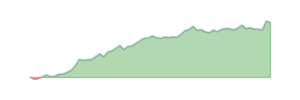 |
| Hungary | HU | 6,75 | 16,00 | 1 |  |
29.481 | 10,06 | 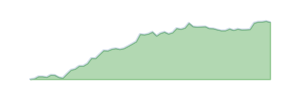 |
| Czech Republic | CZ | 4,75 | 7,00 | -2 | 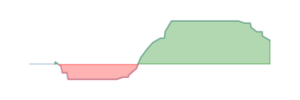 |
3.461.640 | 14,73 | 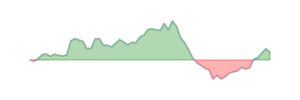 |
| South Africa | ZA | 8,25 | 8,25 | 46 | 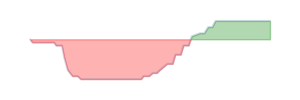 |
1.238.950 | 6,44 |  |
| Japan | JP | 0,10 | -0,10 | 104 |  |
7.536.710 | 2,84 | 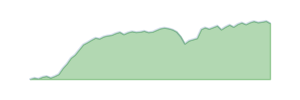 |
| Australia | AU | 4,35 | 4,10 | 42 | 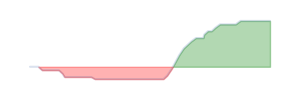 |
449.342 | -27,34 |  |
| New Zealand | NZ | 5,50 | 5,50 | 50 | 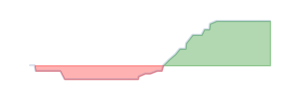 |
84.798 | -10,24 |  |
| China | CN | 3,35 | 3,55 | 1 | 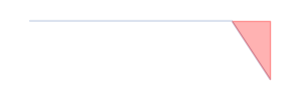 |
429.538 | 2,03 | 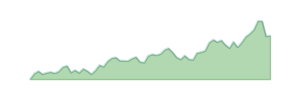 |
| Hong Kong | HK | 5,75 | 5,50 | 37 | 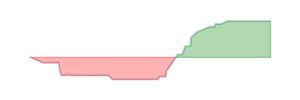 |
 |
||
| India | IN | 6,50 | 6,50 | 48 | 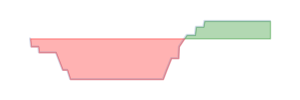 |
33.650 | 19,36 | 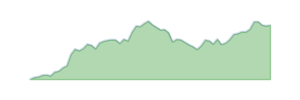 |
| Indonesia | ID | 6,25 | 5,75 | 42 | 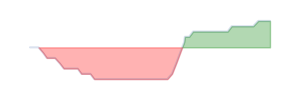 |
 |
||
| South Korea | KR | 8,25 | 8,25 | 46 | 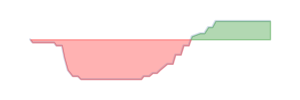 |
520.386 | -4,52 | 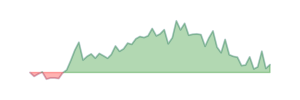 |
| Malaysia | MY | 3,00 | 3,00 | 47 | 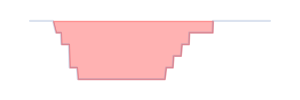 |
632.418 | 4,10 | 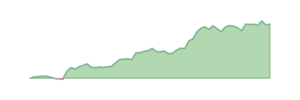 |
| Taiwan | TW | 2,00 | 1,88 | 7 | 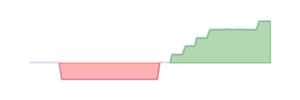 |
20.712.700 | 5,90 | 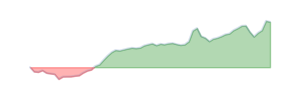 |
| Philippines | PH | 6,50 | 6,25 | 43 | 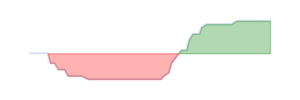 |
7.563 | 4,36 | 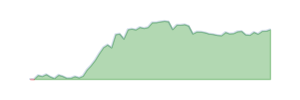 |
| Thailand | TH | 2,50 | 2,00 | 46 | 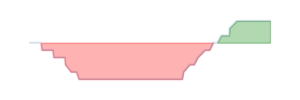 |
9.761.690 | 8,98 |  |
Central Banks Calendar
| Time | Imp | Event | Country | Actual | Previous | Forecast |
|---|---|---|---|---|---|---|
| 24/11 21:45 | balance of trade | New Zealand | NZ$-2.108B | NZ$ -2.0B | ||
| 24/11 21:45 | exports | New Zealand | NZ$5.01B | NZ$5.1B | ||
| 24/11 21:45 | imports | New Zealand | NZ$7.12B | NZ$7.2B | ||
| 24/11 21:45 | retail sales mom | New Zealand | -1.2% | 0.6% | ||
| 24/11 21:45 | retail sales yoy | New Zealand | -3.6% | 2% | ||
| 25/11 03:30 | balance of trade | Thailand | $0.39B | |||
| 25/11 05:00 | industrial production | Singapore | 9.8% | |||
| 25/11 05:00 | industrial production mom | Singapore | 0% | |||
| 25/11 06:00 | producer prices change | Finland | -2.3% | |||
| 25/11 07:00 | loan growth | Norway | ||||
| 25/11 07:00 | business confidence | Turkey | ||||
| 25/11 07:00 | capacity utilization | Turkey | ||||
| 25/11 08:00 | business confidence | Czech Republic | 96 | |||
| 25/11 08:00 | consumer confidence | Czech Republic | 100.7 | |||
| 25/11 08:00 | producer prices change | Spain | -5.2% | |||
| 25/11 08:00 | industrial production | Taiwan | 11.22% | |||
| 25/11 08:00 | retail sales yoy | Taiwan | 3.2% | |||
| 25/11 08:20 | money supply m2 | Taiwan | 5.6% | |||
| 25/11 09:00 | business confidence | Germany | 86.5 | |||
| 25/11 09:00 | ifo current conditions | Germany | 85.7 | |||
| 25/11 09:00 | industrial production | Poland | -0.3% | |||
| 25/11 09:00 | producer prices change | Poland | -6.3% | |||
| 25/11 09:00 | unemployment rate | Poland | 5% | |||
| 25/11 09:30 | business confidence | Slovenia | -8 | |||
| 25/11 11:00 | balance of trade | Luxembourg | €-0.63B | € -0.7B | ||
| 25/11 11:30 | current account | Brazil | $-6.53B | |||
| 25/11 11:30 | foreign direct investment | Brazil | $5.23B | |||
| 25/11 12:00 | gdp growth rate | Nigeria | 10.0% | |||
| 25/11 12:00 | gdp annual growth rate | Nigeria | 3.19% | 3.2% | ||
| 25/11 14:00 | business confidence | Belgium | -12.8 | |||
| 25/11 15:00 | current account | Mexico | $3639M | $ -5200M | ||
| 25/11 15:30 | dallas fed manufacturing index | United States | -3 | |||
| 25/11 21:00 | consumer confidence | South Korea | 101.7 | 102.2 | ||
| 26/11 00:00 | building permits | United States | ||||
| 26/11 06:00 | unemployment rate | Finland | 8.1% | |||
| 26/11 07:00 | producer prices change | Sweden | -2.3% | |||
| 26/11 08:30 | balance of trade | Hong Kong | ||||
| 26/11 09:00 | retail sales yoy | Poland | -3.0% | |||
| 26/11 15:00 | new home sales | United States | 0.738M | |||
| 26/11 15:00 | richmond fed manufacturing index | United States | -14 | |||
| 26/11 15:00 | richmond fed services index | United States | 3 | |||
| 26/11 16:00 | money supply m2 | United States | $21.22T | |||
| 26/11 19:00 | retail sales yoy | Argentina | 204.4% | 190.0% | ||
| 26/11 21:00 | business confidence | South Korea | 69 | 71 | ||
| 27/11 02:00 | consumer confidence | Taiwan | 77.06 | |||
| 27/11 03:00 | government budget value | Philippines | PHP-273.3B | |||
| 27/11 04:00 | producer prices change | Malaysia | -2.1% | |||
| 27/11 06:00 | business confidence | Finland | ||||
| 27/11 06:00 | consumer confidence | Finland | ||||
| 27/11 07:00 | consumer confidence | Germany | -18.3 | -16 | ||
| 27/11 07:00 | unemployment rate | Norway | 4% | |||
| 27/11 07:00 | loan growth | Sweden | 1% | |||
| 27/11 07:45 | consumer confidence | France | 94 | |||
| 27/11 09:00 | manufacturing pmi | Austria | 42.0 | |||
| 27/11 09:00 | zew economic sentiment index | Switzerland | -7.7 | |||
| 27/11 10:00 | gdp annual growth rate | Croatia | 3.3% | 2.4% | ||
| 27/11 11:30 | money supply m3 | India | ||||
| 27/11 12:00 | balance of trade | Mexico | $-0.58B | |||
| 27/11 12:00 | mortgage rate | United States | ||||
| 27/11 13:30 | durable goods orders | United States | -0.8% | |||
| 27/11 13:30 | durable goods orders ex defense | United States | -1.1% | |||
| 27/11 13:30 | durable goods orders ex transportation | United States | ||||
| 27/11 13:30 | gdp growth rate | United States | 3.2% | |||
| 27/11 16:00 | business confidence | Russia | 7.0 | |||
| 27/11 16:00 | industrial production | Russia | ||||
| 27/11 16:00 | retail sales yoy | Russia | 6.5% | |||
| 27/11 16:00 | unemployment rate | Russia | ||||
| 28/11 00:00 | business confidence | New Zealand | 65.7 | |||
| 28/11 05:30 | business confidence | Netherlands | -3.2 | |||
| 28/11 06:00 | retail sales mom | Estonia | -5.3% | |||
| 28/11 06:00 | retail sales yoy | Estonia | -4.4% | |||
| 28/11 07:00 | retail sales mom | Denmark | 0.1% | |||
| 28/11 07:00 | retail sales yoy | Denmark | 0.5% | |||
| 28/11 07:00 | retail sales yoy | Lithuania | 4.1% | |||
| 28/11 07:00 | balance of trade | Turkey | $-5.13B | |||
| 28/11 07:00 | exports | Turkey | $21.99B | |||
| 28/11 07:00 | imports | Turkey | $27.12B | |||
| 28/11 08:00 | business confidence | Slovakia | -3.3 | |||
| 28/11 08:00 | consumer confidence | Slovakia | -19 | |||
| 28/11 08:00 | core inflation rate | Spain | 2.5% | |||
| 28/11 08:00 | inflation rate | Spain | 1.8% | |||
| 28/11 08:00 | business confidence | Sweden | ||||
| 28/11 08:00 | consumer confidence | Sweden | ||||
| 28/11 09:00 | business confidence | Bulgaria | 13.3 | |||
| 28/11 09:00 | loan growth | Eurozone | 0.7% | 0.7% | ||
| 28/11 09:00 | loans to private sector | Eurozone | 1.1% | 1.1% | ||
| 28/11 09:00 | money supply m3 | Eurozone | 3.2% | 3.2% | ||
| 28/11 09:00 | business confidence | Italy | 85.8 | |||
| 28/11 09:00 | consumer confidence | Italy | 97.4 | |||
| 28/11 09:00 | gdp growth rate | Poland | 1.5% | -0.2% | ||
| 28/11 09:00 | gdp annual growth rate | Poland | 3.2% | 2.7% | ||
| 28/11 09:30 | retail sales mom | Slovenia | -2.6% | |||
| 28/11 09:30 | retail sales yoy | Slovenia | -3% | |||
| 28/11 09:30 | producer prices change | South Africa | 1% | |||
| 28/11 10:00 | industrial production | Cyprus | 1.2% | 3.2% | ||
| 28/11 10:00 | consumer confidence | Eurozone | -12.5 | |||
| 28/11 10:00 | consumer confidence price trends | Eurozone | 10.5 | |||
| 28/11 10:00 | producer prices change | Italy | -2% | |||
| 28/11 10:00 | gdp annual growth rate | Malta | 4.3% | |||
| 28/11 10:30 | inflation rate | Belgium | 3.2% | |||
| 28/11 11:00 | loan growth | Greece | 3.2% | |||
| 28/11 11:00 | retail sales mom | Ireland | 0.5% | |||
| 28/11 11:00 | retail sales yoy | Ireland | 0.2% | |||
| 28/11 11:30 | loan growth | Brazil | 1.2% | |||
| 28/11 11:30 | foreign exchange reserves | Turkey | ||||
| 28/11 12:00 | producer prices change | Brazil | 6.06% | |||
| 28/11 12:00 | business confidence | Spain | ||||
| 28/11 13:00 | inflation rate | Germany | 2% | 1.9% | ||
| 28/11 13:30 | current account | Canada | C$-8.5B | C$-3.0B | ||
| 28/11 13:30 | continuing jobless claims | United States | ||||
| 28/11 13:30 | initial jobless claims | United States | ||||
| 28/11 23:00 | industrial production | South Korea | ||||
| 28/11 23:00 | industrial production mom | South Korea | ||||
| 28/11 23:00 | retail sales mom | South Korea | ||||
| 28/11 23:30 | unemployment rate | Japan | 2.4% | |||
| 28/11 23:50 | industrial production | Japan | -2.8% | |||
| 28/11 23:50 | industrial production mom | Japan | 1.4% | |||
| 29/11 00:00 | government budget value | Mexico | MXN-993.2B | |||
| 29/11 00:00 | money supply m2 | Russia | 18.8% | |||
| 29/11 00:00 | government budget value | South Africa | ZAR-4.38B | |||
| 29/11 02:00 | loans to private sector | Singapore | S$808.8B | |||
| 29/11 02:00 | balance of trade | Vietnam | $1.99B | |||
| 29/11 02:00 | industrial production | Vietnam | 7.0% | |||
| 29/11 02:00 | inflation rate | Vietnam | 2.89% | |||
| 29/11 02:00 | retail sales yoy | Vietnam | 7.1% | |||
| 29/11 04:00 | industrial production | Thailand | -3.51% | |||
| 29/11 05:00 | consumer confidence | Japan | 36.2 | |||
| 29/11 05:00 | producer prices change | Singapore | -7.1% | |||
| 29/11 05:30 | inflation rate | Netherlands | 3.5% | |||
| 29/11 06:00 | gdp growth rate | Estonia | 0.0% | 0.6% | ||
| 29/11 06:00 | gdp annual growth rate | Estonia | -1.0% | 0.2% | ||
| 29/11 06:00 | gdp growth rate | Finland | 0.3% | |||
| 29/11 06:00 | gdp annual growth rate | Finland | -1.2% | |||
| 29/11 06:00 | money supply m3 | South Africa | 7.25% | |||
| 29/11 07:00 | unemployment rate | Denmark | 2.6% | |||
| 29/11 07:00 | retail sales mom | Germany | 1.2% | |||
| 29/11 07:00 | retail sales yoy | Germany | 3.8% | |||
| 29/11 07:00 | money supply m3 | Malaysia | 4.2% | |||
| 29/11 07:00 | retail sales mom | Norway | -0.3% | |||
| 29/11 07:00 | gdp growth rate | Sweden | -0.3% | |||
| 29/11 07:00 | gdp annual growth rate | Sweden | 0.5% | |||
| 29/11 07:00 | retail sales mom | Sweden | -0.1% | |||
| 29/11 07:00 | retail sales yoy | Sweden | 2.7% | |||
| 29/11 07:00 | current account | Thailand | $0.6B | |||
| 29/11 07:00 | gdp growth rate | Turkey | 0.1% | 1.8% | ||
| 29/11 07:00 | gdp annual growth rate | Turkey | 1.9% | |||
| 29/11 07:30 | producer prices change | Hungary | 0.9% | |||
| 29/11 07:30 | unemployment rate | Hungary | 4.6% | |||
| 29/11 07:30 | retail sales mom | Switzerland | -0.5% | |||
| 29/11 07:30 | retail sales yoy | Switzerland | 2.2% | |||
| 29/11 07:30 | retail sales yoy | Thailand | 31.36% | 13.0% | ||
| 29/11 07:45 | gdp growth rate | France | 0.2% | |||
| 29/11 07:45 | gdp annual growth rate | France | 1% | 0.7% | ||
| 29/11 07:45 | inflation rate | France | 1.2% | |||
| 29/11 07:45 | producer prices change | France | -7% | |||
| 29/11 08:00 | gdp annual growth rate | Austria | -0.6% | 1.7% | ||
| 29/11 08:00 | inflation rate | Austria | ||||
| 29/11 08:00 | producer prices change | Austria | -2.6% | |||
| 29/11 08:00 | gdp growth rate | Czech Republic | 0.4% | 0.3% | ||
| 29/11 08:00 | gdp annual growth rate | Czech Republic | 0.6% | 1.3% | ||
| 29/11 08:00 | retail sales mom | Spain | 1% | |||
| 29/11 08:00 | retail sales yoy | Spain | 4.1% | |||
| 29/11 08:00 | business confidence | Switzerland | 99.5 | |||
| 29/11 08:00 | gdp growth rate | Switzerland | 0.7% | 0.5% | ||
| 29/11 08:00 | gdp annual growth rate | Switzerland | 1.8% | 1.1% | ||
| 29/11 08:00 | gdp annual growth rate | Taiwan | 4.8% | |||
| 29/11 08:30 | retail sales yoy | Hong Kong | -8.7% | |||
| 29/11 08:55 | unemployment rate | Germany | 6.1% | |||
| 29/11 09:00 | producer prices change | Bulgaria | -0.8% | |||
| 29/11 09:00 | money supply m3 | Czech Republic | 5.5% | |||
| 29/11 09:00 | foreign exchange reserves | Nigeria | $39.74B | $40.0B | ||
| 29/11 09:00 | inflation rate | Poland | 5% | |||
| 29/11 09:00 | current account | Spain | €5.63B | €4.3B | ||
| 29/11 09:30 | business confidence | Portugal | 2.1 | |||
| 29/11 09:30 | consumer confidence | Portugal | -13.90 | |||
| 29/11 09:30 | inflation rate | Portugal | 2.3% | |||
| 29/11 09:30 | inflation rate | Slovenia | 0% | |||
| 29/11 10:00 | gdp growth rate | Belgium | 0.3% | 0.2% | ||
| 29/11 10:00 | gdp annual growth rate | Belgium | 0.9% | 1.0% | ||
| 29/11 10:00 | industrial production | Croatia | 1% | |||
| 29/11 10:00 | inflation rate | Croatia | 2.2% | |||
| 29/11 10:00 | retail sales mom | Croatia | 2.1% | |||
| 29/11 10:00 | retail sales yoy | Croatia | 7.1% | |||
| 29/11 10:00 | consumer price index cpi | Eurozone | ||||
| 29/11 10:00 | core inflation rate | Eurozone | ||||
| 29/11 10:00 | inflation rate | Eurozone | ||||
| 29/11 10:00 | producer prices change | Greece | -4.5% | |||
| 29/11 10:00 | retail sales yoy | Greece | -5.2% | 1.4% | ||
| 29/11 10:00 | unemployment rate | Greece | 9.3% | |||
| 29/11 10:00 | inflation rate | Italy | 0.9% | 1.2% | ||
| 29/11 10:00 | current account | North Macedonia | $-120.13M | |||
| 29/11 10:00 | unemployment rate | Portugal | 6.4% | |||
| 29/11 10:30 | government budget value | India | ||||
| 29/11 11:00 | producer prices change | Belgium | ||||
| 29/11 11:00 | gdp growth rate | Latvia | -0.9% | |||
| 29/11 11:00 | gdp annual growth rate | Latvia | 0.5% | 2.5% | ||
| 29/11 11:00 | retail sales mom | Latvia | -0.3% | |||
| 29/11 11:00 | retail sales yoy | Latvia | 0.2% | |||
| 29/11 11:00 | producer prices change | Luxembourg | -3.2% | |||
| 29/11 11:00 | industrial production | North Macedonia | -7.9% | |||
| 29/11 11:00 | retail sales yoy | North Macedonia | ||||
| 29/11 11:00 | gdp growth rate | Portugal | 0.2% | 0.2% | ||
| 29/11 11:00 | gdp annual growth rate | Portugal | 1.6% | 1.9% | ||
| 29/11 11:00 | balance of trade | Serbia | $-908.9M | |||
| 29/11 11:00 | industrial production | Serbia | 4.6% | |||
| 29/11 11:00 | retail sales yoy | Serbia | 3.1% | |||
| 29/11 11:00 | unemployment rate | Serbia | 9.2% | |||
| 29/11 11:30 | government budget value | Brazil | BRL-53.767B | |||
| 29/11 11:30 | foreign exchange reserves | India | ||||
| 29/11 11:30 | loan growth | India | ||||
| 29/11 12:00 | unemployment rate | Brazil | 6.4% | |||
| 29/11 12:00 | gdp annual growth rate | India | 6.8% | |||
| 29/11 12:00 | industrial production | Chile | ||||
| 29/11 12:00 | retail sales mom | Chile | 0.4% | |||
| 29/11 12:00 | retail sales yoy | Chile | 3.9% | |||
| 29/11 12:00 | unemployment rate | Chile | 8.7% | |||
| 29/11 13:30 | gdp growth rate | Canada | 0.5% | 0.6% | ||
| 29/11 13:30 | gdp growth annualized | Canada | 2.1% | 2.8% | ||
| 29/11 14:45 | chicago pmi | United States | 41.6 | |||
| 29/11 16:00 | government budget value | Canada | C$-2.55B | C$ -0.82B | ||
| 29/11 23:50 | retail sales mom | Japan | -2.3% | |||
| 29/11 23:50 | retail sales yoy | Japan | 0.5% | |||
| 30/11 01:30 | business confidence | China | 50.1 | |||
| 30/11 01:30 | non manufacturing pmi | China | 50.2 |
Central Banks News
| Time | Headlines | |
|---|---|---|
| 2024-11-23 01:36 | Trump nominates Lori Chavez-Deremer as Secretary of Labor | |
| 2024-11-23 01:34 | Correct: Trump Nominates Lori Chavez-Deremer as Secretary of Labor. | |
| 2024-11-23 01:09 | Japan's Foreign Minister arranging visit to China by end of year, according to Asahi | |
| 2024-11-23 01:08 | Trump taps Russell Thurlow Vought to head budget office | |
| 2024-11-23 00:54 | Trump selects Scott Bessent for Treasury Secretary | |
| 2024-11-23 00:54 | Trump team to announce Bessent as Treasury Secretary | |
Central Bank's Role in Monetary Policy
Interest Rates
1. Policy Interest Rates
- Definition: Central banks set the policy interest rate, which is the rate at which they lend to commercial banks. This rate influences other interest rates in the economy, including those for loans and deposits.
- Mechanism: By changing the policy rate, central banks can influence economic activity.
- Lowering Interest Rates: When a central bank lowers interest rates, borrowing becomes cheaper, encouraging businesses and consumers to take loans and spend more, which can stimulate economic growth.
- Raising Interest Rates: Conversely, when the central bank raises interest rates, borrowing becomes more expensive, which can slow down spending and investment, helping to control inflation.
2. Forward Guidance
- Definition: This is a communication strategy used by central banks to influence expectations about future interest rates.
- Mechanism: By providing guidance on the future path of interest rates, central banks can shape economic expectations and behavior. For instance, if a central bank signals that rates will remain low for an extended period, it can encourage spending and investment.
Balance Sheet Operations
1. Open Market Operations (OMOs)
- Definition: These are the buying and selling of government securities in the open market to regulate the supply of money.
- Mechanism:
- Buying Securities: When a central bank buys government securities, it adds money to the banking system, increasing liquidity and encouraging lending and investment.
- Selling Securities: When it sells securities, it takes money out of circulation, reducing liquidity and potentially slowing down economic activity.
2. Quantitative Easing (QE)
- Definition: QE is a type of monetary policy where a central bank purchases longer-term securities from the open market to increase the money supply and encourage lending and investment.
- Mechanism: By buying assets such as government bonds, mortgage-backed securities, and other financial instruments, the central bank increases the reserves of banks, encouraging them to lend more. This is typically used when conventional monetary policy (like lowering interest rates) is not sufficient, especially when interest rates are already near zero.
3. Balance Sheet Composition
- Definition: The central bank’s balance sheet consists of its assets and liabilities, and the composition of these can influence monetary policy.
- Mechanism: By holding different types of assets (e.g., government bonds, mortgage-backed securities), the central bank can influence specific sectors of the economy. For example, purchasing mortgage-backed securities can specifically target the housing market.
Objectives of Using Interest Rates and Balance Sheet
1. Inflation Control
- Central banks aim to keep inflation within a target range. By adjusting interest rates and using balance sheet operations, they can influence demand in the economy, helping to control price levels.
2. Employment and Economic Growth
- Central banks also aim to achieve maximum sustainable employment. Lowering interest rates and increasing the money supply can stimulate economic growth and reduce unemployment.
3. Financial Stability
- Through their policies, central banks strive to maintain stability in the financial system. This includes managing liquidity in the banking system and ensuring that financial institutions operate smoothly.